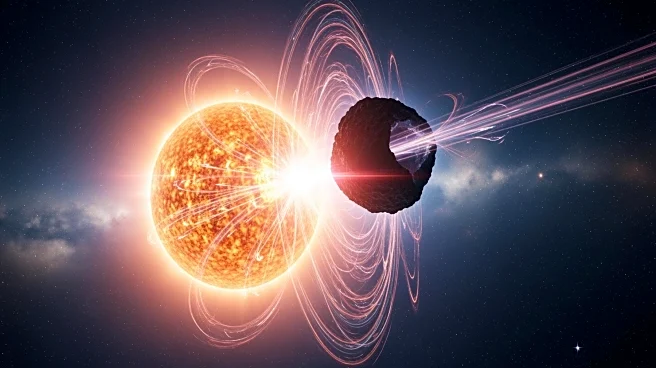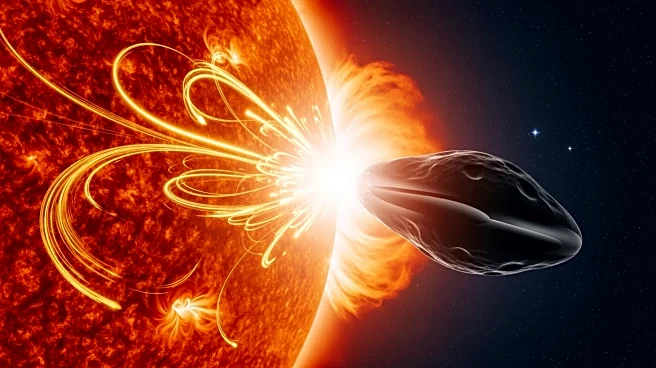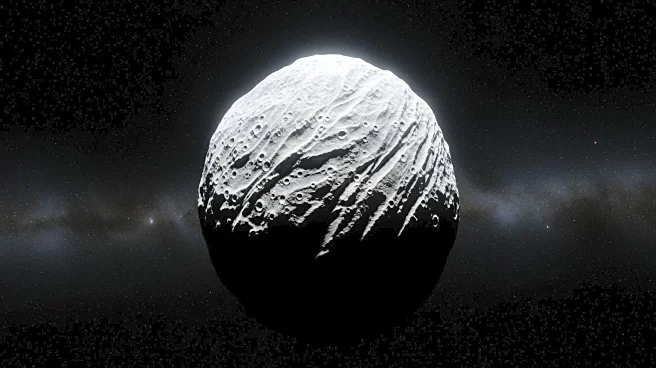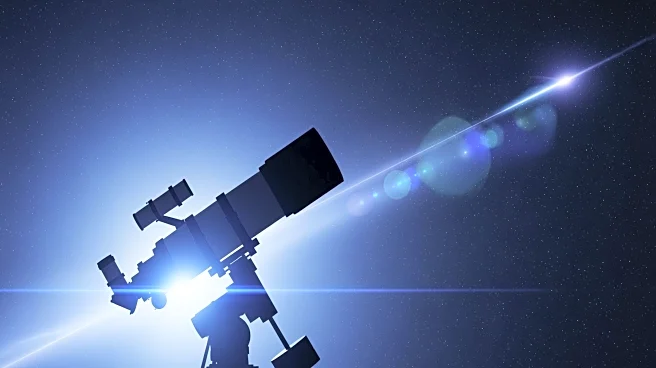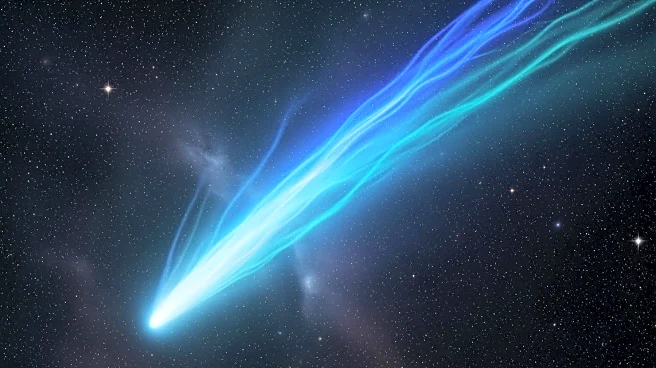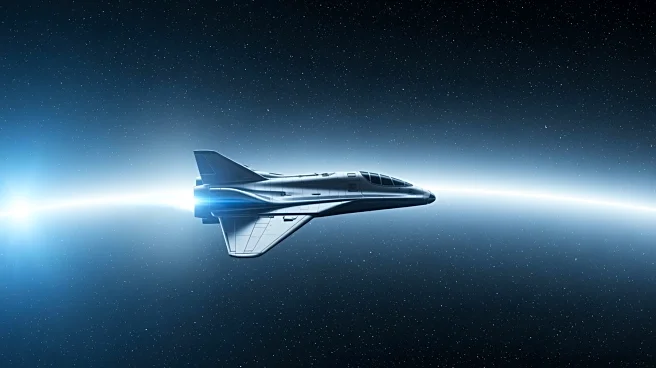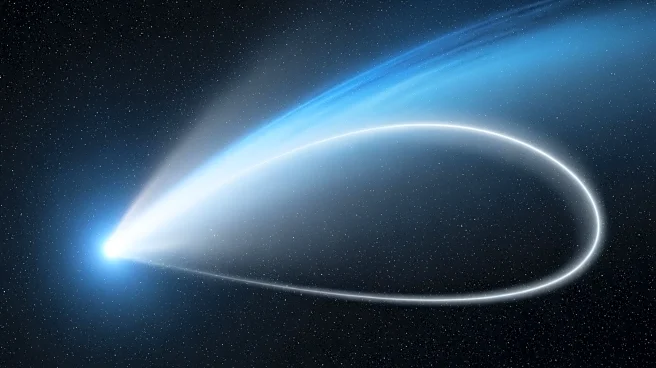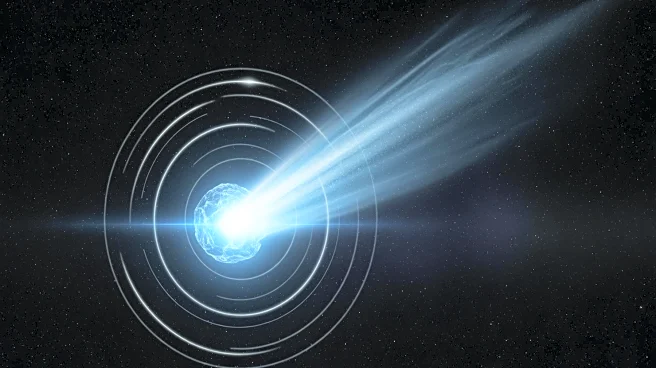What's Happening?
Astronomers are closely observing a rare cosmic event involving the interstellar object 3I/ATLAS and a coronal mass ejection from the Sun. Discovered on July 1, 2025, by the ATLAS survey in Chile, 3I/ATLAS is only
the third interstellar object ever observed. The object recently reached its closest approach to the Sun, known as perihelion, on October 29, 2025. The scientific community is eagerly awaiting data to analyze the impact of the Sun's plasma cloud on 3I/ATLAS. This collision presents a unique opportunity to study the object's composition and origins, as the interaction may alter its tail or reveal new characteristics.
Why It's Important?
The collision between the Sun's plasma and 3I/ATLAS could provide significant insights into the nature of interstellar objects. Understanding how 3I/ATLAS reacts to the solar assault will help scientists determine its composition, density, and potential origins from a distant star system. This event is particularly intriguing due to the object's unusual composition, which includes a high concentration of nickel. The findings could challenge existing theories about interstellar objects and contribute to our understanding of the universe.
What's Next?
As 3I/ATLAS continues its journey, it will soon pass by Mars, allowing astronomers to gather more detailed observations using powerful telescopes. The Virtual Telescope Project is set to livestream new views of the object on November 16, providing further opportunities for analysis. The scientific community is keen to confirm the object's identity and composition, with some speculating it could be an alien craft. However, recent detections of hydroxyl radicals suggest it is a comet undergoing outgassing as it warms by the Sun.
Beyond the Headlines
The event has sparked discussions about the possibility of 3I/ATLAS being an alien craft, a theory proposed by Harvard astronomer Avi Loeb. The object's high velocity and unusual shape have fueled these speculations. However, NASA remains confident that further observations will confirm its natural cometary nature. The ongoing analysis will help clarify whether the object is a bizarre-but-natural comet or something more exotic.
